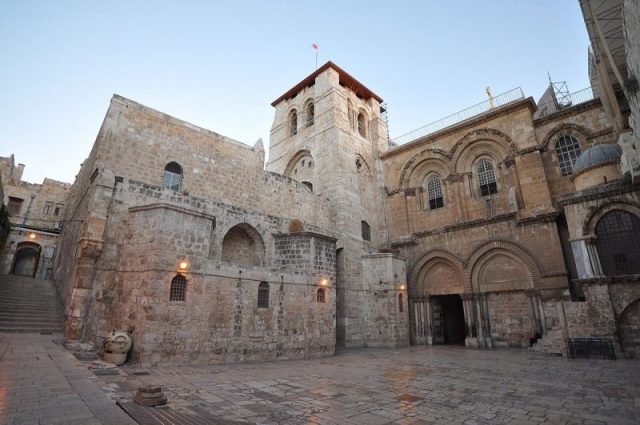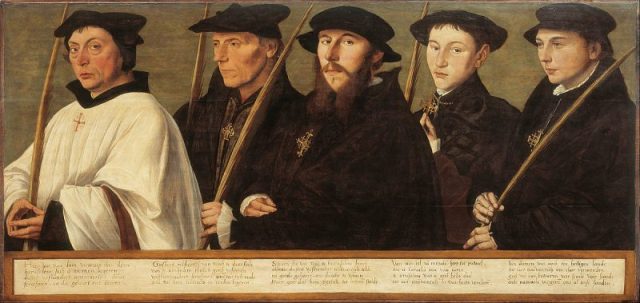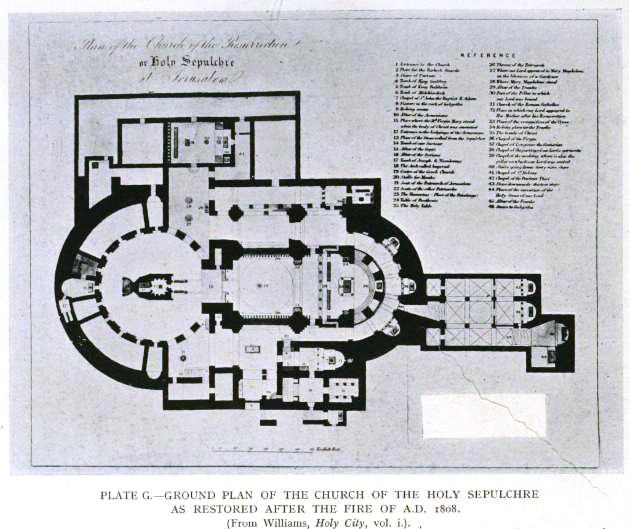In October 2016, researchers began investigating the site in Jerusalem that is traditionally said to have been the location where the body of Jesus Christ was laid to rest. During a total of 60 uninterrupted hours of work, they photographed the tomb that had previously remained sealed for centuries, and they also retrieved samples of mortar from it. At the end of the stint, dozens of scientists, along with prominent priests and monks, used the rare opportunity to look inside the marble shrine that protects the tomb, which is known as the Edicule.
The tomb was unsealed amid restoration efforts at the Church of the Holy Sepulchre in Jerusalem’s Old City, inside which shelters the Edicule, which dates from the 18th century, and the tomb within it. While science won’t rush to confirm that this was 100 percent for sure the resting place of Jesus of Nazareth, it appears that the tomb itself has indeed survived turbulent historical events and natural disasters. It reportedly remained in situ when the Church of the Holy Sepulchre was destroyed and re-erected in the past.
Some significant news related to the tomb of Jesus was shared by scientists who arrived a year later. In November 2017 it was revealed that analysis of materials taken from the tomb’s opening places its age in the 4th century A.D. Such news supports the traditional beliefs and narratives related to the sacred site.

When the tomb was unsealed, it created a moment of fascination to both scientists and believers. “This is the Holy Rock that has been revered for centuries, but only now can actually be seen,” were the words of Antonia Moropolou, the Chief Scientific Supervisor Professor, and leader of the restoration and conservation efforts of the Edicule.
For centuries now, those remains have indeed been revered as the tomb of Jesus Christ. The tomb itself consists of an empty burial bed believed to have been the place where Jesus was buried and later resurrected. As accounts suggest, the burial bed was cut out from a cave wall. In the mid-16th century, or perhaps even earlier, a cladding made of marble was added on top of the bed to protect it from enthusiasts, or pilgrims, removing parts of the sacred artifact.

The cladding was removed on October 26, 2016, and an initial check-up by conservationists from the National Technical University of Athens (NTUA) revealed a filler material that lurked beneath. A surprise came hours later when another slab of marble, older and cracked, was exposed.
This second slab was engraved with a cross and appeared to rest directly on top of the original cover of the limestone burial bed. Researchers speculated on which period the second slab was dated; however, they were happy that the original bed was there intact.
“We can’t say 100 percent, but it appears to be visible proof that the location of the tomb has not shifted through time, something that scientists and historians have wondered for decades,” commented Frederik Hiebert, a National Geographic archaeologist-in-residence.
According to archaeologists, it is not possible to say whether the tomb indeed belonged to Jesus. What can be said is that this place has been historically acknowledged as the Jesus burial bed by delegates of the first Christian Roman Emperor Constantine in the 4th century A.D.
What also adds weights to the question is that over the long course of history, the Church of Holy Sepulchre has itself undergone numerous incidents. In 1009, for example, the church was reportedly destroyed and rebuilt again. Such events have undoubtedly led modern-day scholars to remain cautious about claims that this is truly the burial place of Christ as acknowledged by the Roman delegation 1,700 years ago.

Light was shed on at least one aspect of the story, however, when in November of last year research confirmed that the tomb is nearly 1,700 years. Reportedly, the research team used a novel technique known as optically stimulated luminescence to determine how recently the quartz sediment samples extracted from the mortar of the tomb were exposed to light.
The test results are a pretty close match to the time when the Roman delegation paid the visit, National Geographic reported. Earlier estimates about the age of the tomb proposed that it was as old as a millennium, which would have been the Crusader period. The latest information shared about the tomb’s age appear to match the historical narrative that the Ancient Romans built a monument at the site around three centuries after the death of Jesus.
According to more findings shared by NTUA, which has previously handled restoration efforts on other significant sites such as the Acropolis in Athens, there is a “very real risk” that the holiest of all Christian sites could suffer from structural failure and collapse. The NTUA team has found out during the restoration activities that the Edicule sits on a precarious foundation composed of decayed mortar, rubble, as well as underground tunnels. The team warned in March 2017 that additional work is a must to prevent the shrine from undergoing unwanted damage in the future.
The latest restoration efforts of the Edicule were delayed by disputes among the Greek Orthodox, Armenian, and Roman Catholic denominations, all three of which share custody of this church. The Coptic Orthodox, Syriac Orthodox, and Ethiopian Tewahedo also have a presence at the Church of the Holy Sepulchre, but to a lesser degree.
